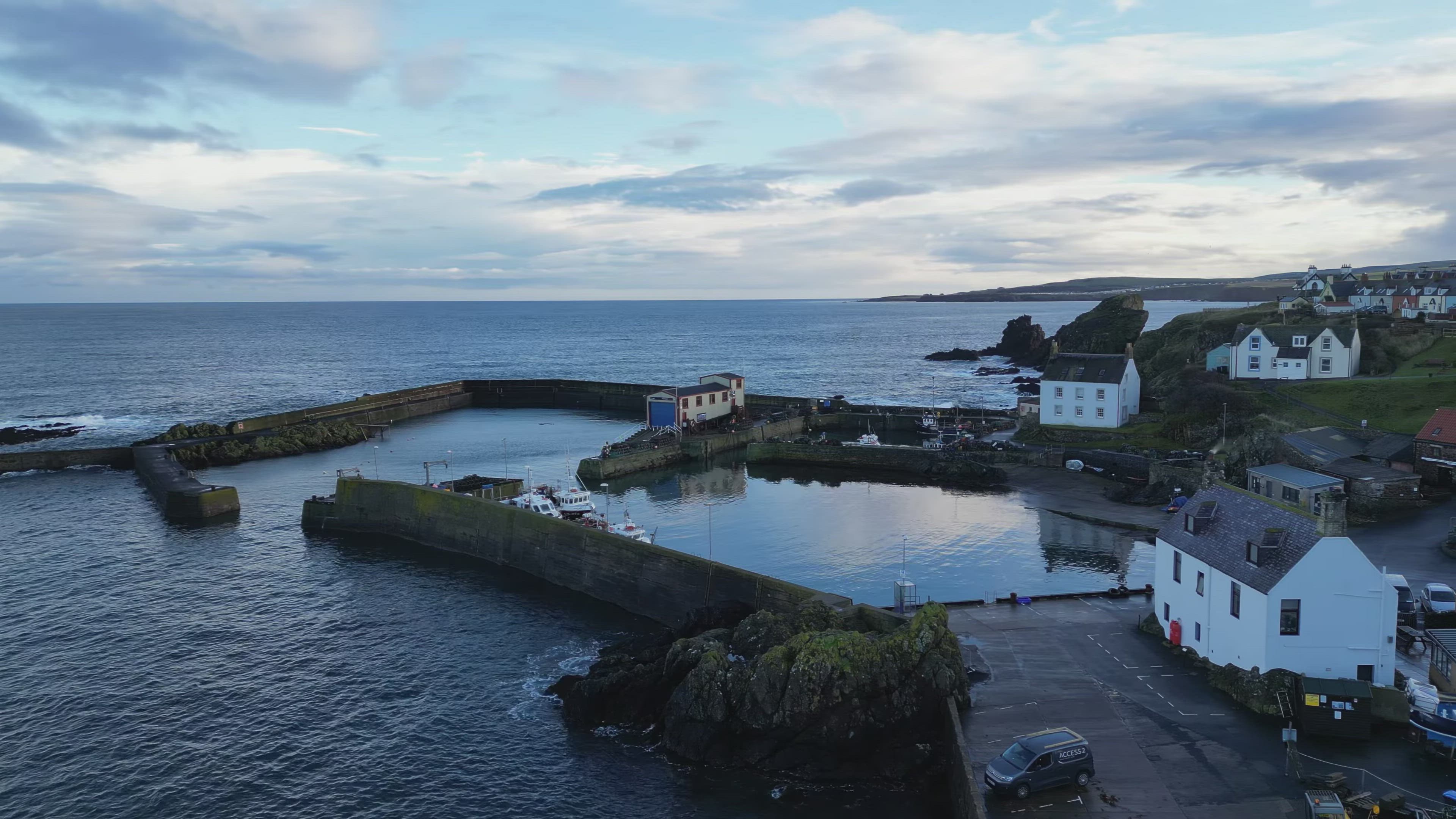
Interested In This Footage?
St Abbs Harbour Scotland Xmas day 2022
- almost 3 years ago
- 147 VŪZ
6 


- 5
- Report
St Abbs was originally called Coldingham Shore. Prior to any buildings the fishermen who worked their boats from the beach resided at Fisher's Brae in Coldingham. These fishermen had to carry their fishing gear one and a half miles down a path to where their fishing vessels were tied up. The path is now known as the Creel Path; creel is the local name for a lobster pot. The first building in St Abbs was constructed in about the middle of the 18th century followed later by a row of five cottages. This first row of houses was constructed in a traditional Scottish style with a central fire and a wide chimney. The walls were constructed of "clat and clay," a framework of wood interlaced with straw and daubed with moist clay. By 1832 it is recorded that the inhabitants of the Shore comprised 16 families who, with 20 others residing in Coldingham, made their living by fishing. In addition to these residents, 30 people proceeded annually to the north for the herring fishing, which provided employment for 14 boats from the village. The village was renamed at the end of the 19th century by the then-laird, Andrew Usher, who played a major role in improving the fishing village and harbour.[1] Usher purchased the Northfield estate on the edge of the village, enlarging and finishing the building of a countryside manor by the coastal shore in 1892.[1] He considered the local public hall inadequate and subsequently funded a new village hall and school, which was constructed in 1887 and is now occupied by the St Abbs visitor centre.[1] Usher also gave funds for the building of the local church in 1892 and the extension of the outer harbour wall in 1890.[1] In November 1907 the Member of Parliament (MP) for Berwickshire, Harold Tennant, announced that the Royal National Lifeboat Society had agreed to supply St Abbs with a lifeboat, and that the Board of Trade had also agreed to place life-saving apparatus at St Abbs as soon as possible.[2] The RMS Mauretania during a speed trial off St Abbs, Scotland, 18 September 1907. The lighthouse and its buildings are still there and appear essentially the same. On 5 September 1914, HMS Pathfinder was sunk off St Abbs Head by the German U-21, the first Royal Navy ship to be sunk by a U-boat. St Abbs was the main subject of the book, Ebb Tide: Adrift on the Waves of Memory With the Fisher Folk of Berwickshire, by Will Wilson.
Up Next
ST ABBS LIGHTHOUSE SCOTLAND

- jimthorley
- 631 VŪZ
7 - 10
- 8 months ago
The Waterfront Edinburgh Scotland

- Jaybee2786
- 1.4k VŪZ
8 - 13
- almost 3 years ago
Scottish Coastal by Drone
- lee the flying sco...
- 985 VŪZ
5 - 5
- almost 4 years ago
My time in Scotland

- Cpt. Jojo
- 1.1k VŪZ
11 - 14
- about 7 years ago
NC500 SCOTLAND TOUR 2022

- benhawkinslive
- 1.7k VŪZ
12 - 15
- about 3 years ago
Panoramic View of Edinburgh

- Jaybee2786
- 509 VŪZ
5 - 1
- over 2 years ago
A Day In The Life Of Aberdeen

- SilbChris
- 743 VŪZ
11 - 5
- over 8 years ago
The Royal and Ancient Golf Club of St. Andrews

- Jaybee2786
- 2.3k VŪZ
13 - 13
- over 6 years ago
A Sunny Windy Day In Harris & Lewis. Mavic 3

- Jaybee2786
- 982 VŪZ
3 - 4
- over 2 years ago
Tantallion Castle Scotland 14 06 22

- Jaybee2786
- 1.0k VŪZ
4 - 6
- over 3 years ago

